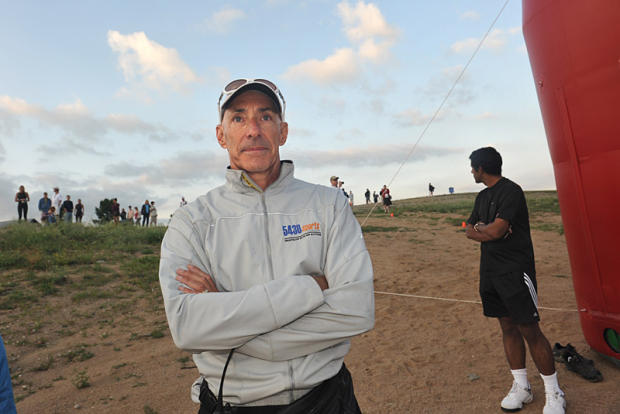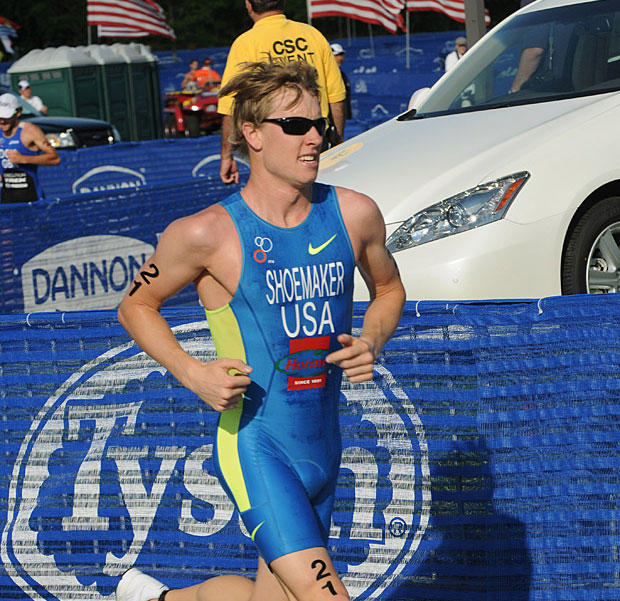Jarrod Shoemaker’s Lawsuit

Elite athlete Jarrod Shoemaker has filed a lawsuit against USA Triathlon. A factual landscape placing this lawsuit in context is published on Slowtwitch right now in a 2-part series: It was a Dark and Stormy NGB. "Dark and Stormy" was my best effort at an investigative report. What follows is my opinion.
The USOC requires of any daughter federation that its board of directors maintain an elite athlete participation of at least 20 percent. When members were presented a resolution last year that sought to make changes in USAT's bylaws, two grievous errors were committed. First, a grab-bag of 8 bylaw changes were rolled into a single resolution, which did not provide members the ability to parse and choose between them. This resolution could and should have been split into at least 3 resolutions, each accompanied by, according to USAT's bylaws, "an explanation of not more than 1000 words stating the reasons for the proposed amendment."
The second, and more serious, error was in the terse text explaining this resolution element. Members were asked to vote yes or no: to change "25%" to "20%" in Article VII 4(b) (1) to conform to USOC requirements.
That's just not true. That was an non-factual description. USAT's bylaws were already in conformity with USOC requirements. I argued this at the time, and certain general directors, including Board president Barry Siff, were also against this part of the resolution.
While Mr. Shoemaker's lawsuit points out the cynical falsity in the text sent to members by USAT accompanying the resolution, the engine empowering the suit is the legal notion that a class cannot have its rights diminished without its own consent. (Whether the suit was filed in the correct state is another matter.)
My argument against this resolution invokes what I believe is the historic context for this 25 percent threshold.
In 1991 there was pro representation at the Federation. It was called IFET. A longtime lawyer, sometime board member, and current and continuing volunteer named David Backer brokered a deal between IFET and the Federation that dissolved IFET, an entity called USPAC taking its place. USPAC was the precursor to the AAC. Why was this done? It was a requirement by the USOC in order for USAT to join the Olympic federation family. As of this moment in time, in 1991, USAT became a daughter federation of the USOC.
One of 3 stipulations by IFET, before it agreed to its own dissolution, was "a reasonable percentage of the board had to be elite athletes chosen by their peers." I have asked David Backer to go back and check in his dusty basement archives, but I believe that this was where the 25 percent threshold was born. I understand that things change, but, change requires a reason. Absent that compelling reason it is my experience that constancy, stability and predictability generate positive results.
My opposition to diminishing the threshold from 25 percent is that the Federation cut this deal with the antecedents of today's elites. USAT ought to have a compelling reason to, now, even 23 years later, go back on its deal. I believe a person's word is his bond, and good people at USAT shook hands with the elite athletes back then and made a promise to them.
This – ahem – is what I believe happened at the time, but I hold out the possibility that David Backer's basement papers may throw egg on my face if I misremember.
All that established, the elite side of our sport has not done itself favors. Elites do communicate regularly – to each other. Just not to the general members who fund two-thirds of the support USAT provides elites. Getting elite athletes to talk about race performance is easy. Getting them to talk about governance is much tougher. As a consequence we hear nothing about an elite complaint until we hear about the lawsuit filed by Steve Sexton or Jarrod Shoemaker. The general membership is understandably taken aback, as they see this as a further drain on age group resources through elite mischief.
Countering this is the charge that elites can't communicate for fear of retaliation, either via an ethics violation shunting them into an arbitration or Hearing & Appeals process, or through diminished funding for any complainer. Still, if the elite cohort had more faith in the goodwill of the membership that supports its efforts, I suspect that faith would be rewarded. What I'm asking for is bravery. It's appropriate to celebrate the brave stand Steve Prefontaine took – one very important milestone allowing today's athletes to make a living in sport. The trick is not only to honor Prefontaine's bravery; but to emulate it.
This one critique of the elites is a plea for more open communication between all parties, which might provide a landscape against which we can openly discuss problems before they become lawsuits. Jarrod Shoemaker's cause is righteous. The lawsuit is regrettable. I don't blame him for filing the suit; why any lawsuit needed to be filed at all is a shared failure.
USAT's board of directors should just immediately cave on this. This was the election from Hell from the get-go, with results arriving 3 months late due to mistake after mistake. Chalk this one up as one more victim of a cursed election. We, all of us, the entire Federation, ought to retreat back to the deal with elite athletes our antecedents originally struck.



